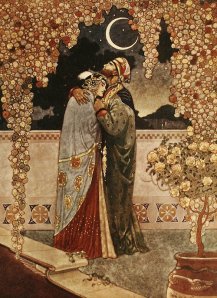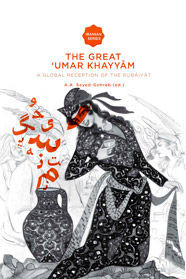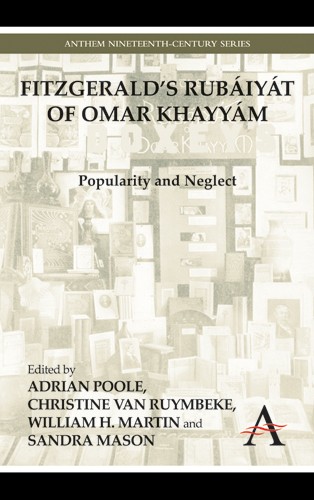
Illustration R. Bull
Recently, Bob Forrest set up a website to publish his extensive archive on the Rubáiyát of Omar Khayyám. It contains, in Bob’s words: “extensive notes and appendices about all manner of Rubaiyat-related issues that caught my attention over time, and which therefore might well catch the attention of other students of FitzGerald’s masterpiece”. Apart from the main essay on FitzGerald’s Rubáiyát , there are notes on the first edition,, studies and contributions on Cowell, Browning, Tennyson and Wilde, on Epicureanism, religious eccentricities and the Christ myth, and comments on a number of artists and their illustrations.
Bob Forrest, retired teacher of maths, (Manchester, UK) published articles on the Rubáiyát and related matter in Omariana and in many other books and magazines. Visit his archive at: http://bobforrestweb.co.uk/The_Rubaiyat/index_of_the_rubaiyat_archive.htm
 Though drinking alcohol is forbidden in Islam, in classical Persian literature wine was a common subject for most authors and poets. The debate as a popular genre was often used to let forbidden objects or ideas, in this case the wine, present the pro’s and con’s and argue about their position in an Islamic society. A very popular theme was the debate between wine and a rose. In this highly interesting article, the author discusses a treatise by the thirteenth century author Muhammad Zangī Bukhārī Gul u mul (“The Rose and the Wine”).
Though drinking alcohol is forbidden in Islam, in classical Persian literature wine was a common subject for most authors and poets. The debate as a popular genre was often used to let forbidden objects or ideas, in this case the wine, present the pro’s and con’s and argue about their position in an Islamic society. A very popular theme was the debate between wine and a rose. In this highly interesting article, the author discusses a treatise by the thirteenth century author Muhammad Zangī Bukhārī Gul u mul (“The Rose and the Wine”). The book The Great ’Umar Khayyam, which consists of 18 essays about Khayyam’s influence, shows that traces of Khayyam can be found throughout Western literature and culture. Dutch poets such as Leopold and Boutens were inspired by him, for instance, but the quatrains also made their mark in 20th century painting and music.
The book The Great ’Umar Khayyam, which consists of 18 essays about Khayyam’s influence, shows that traces of Khayyam can be found throughout Western literature and culture. Dutch poets such as Leopold and Boutens were inspired by him, for instance, but the quatrains also made their mark in 20th century painting and music. This title from Anthem Press, edited by Adrian Poole, Christine van Ruymbeke, William H. Martin and Sandra Mason, was initially published in 2011, but is now available as Ebook.
This title from Anthem Press, edited by Adrian Poole, Christine van Ruymbeke, William H. Martin and Sandra Mason, was initially published in 2011, but is now available as Ebook.